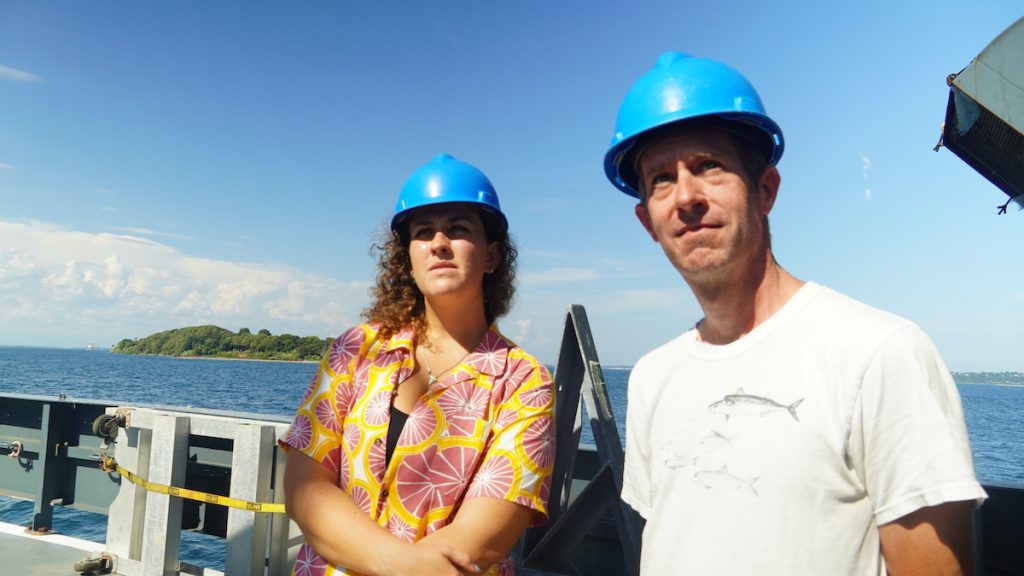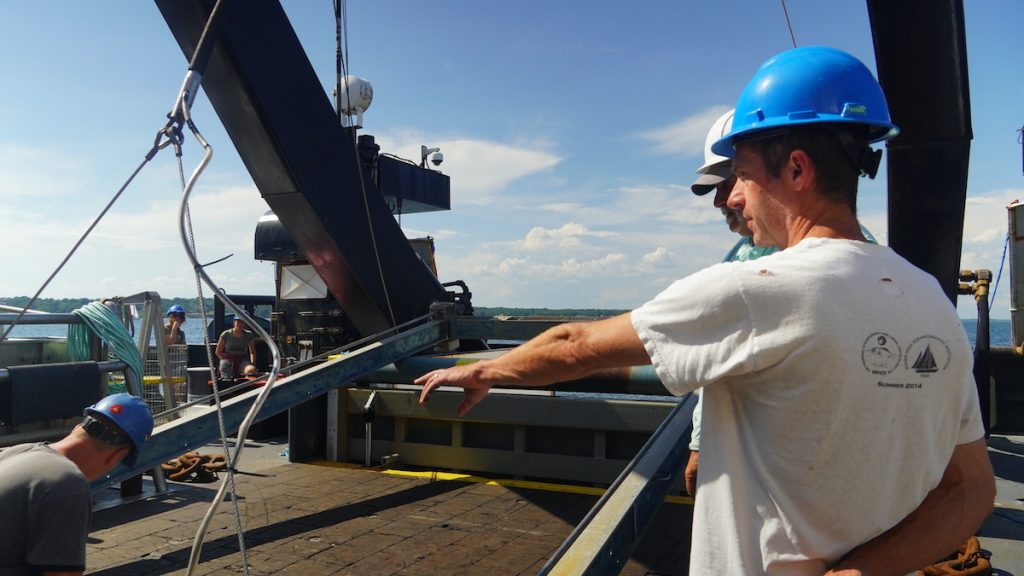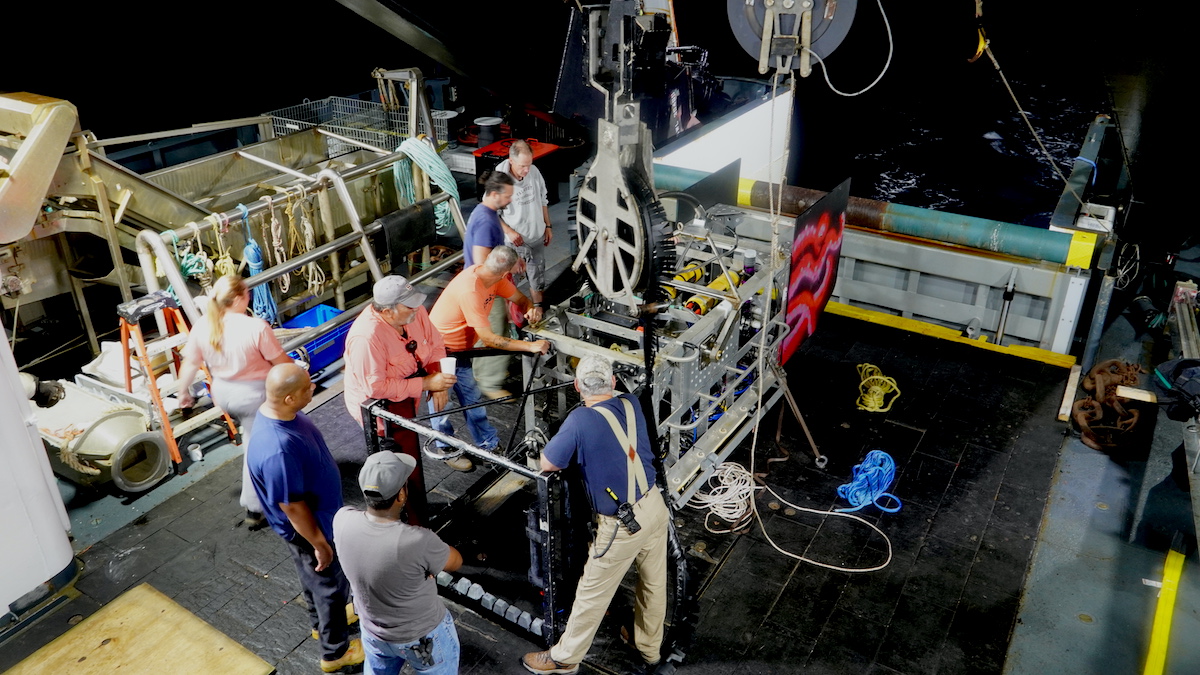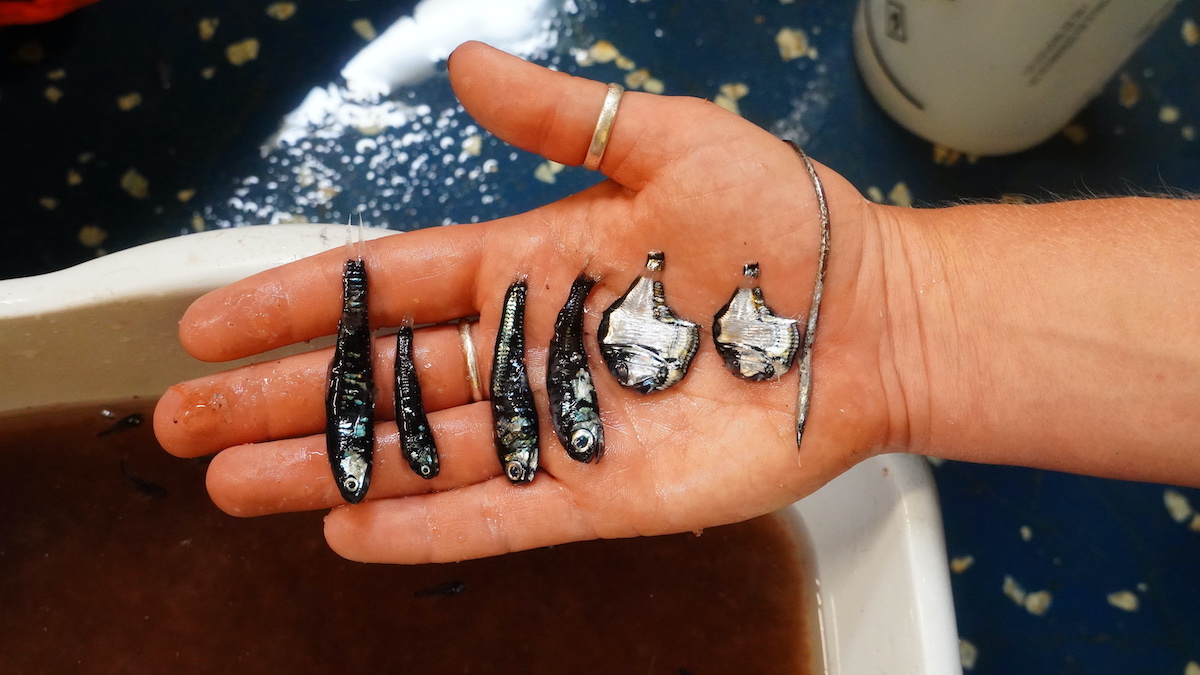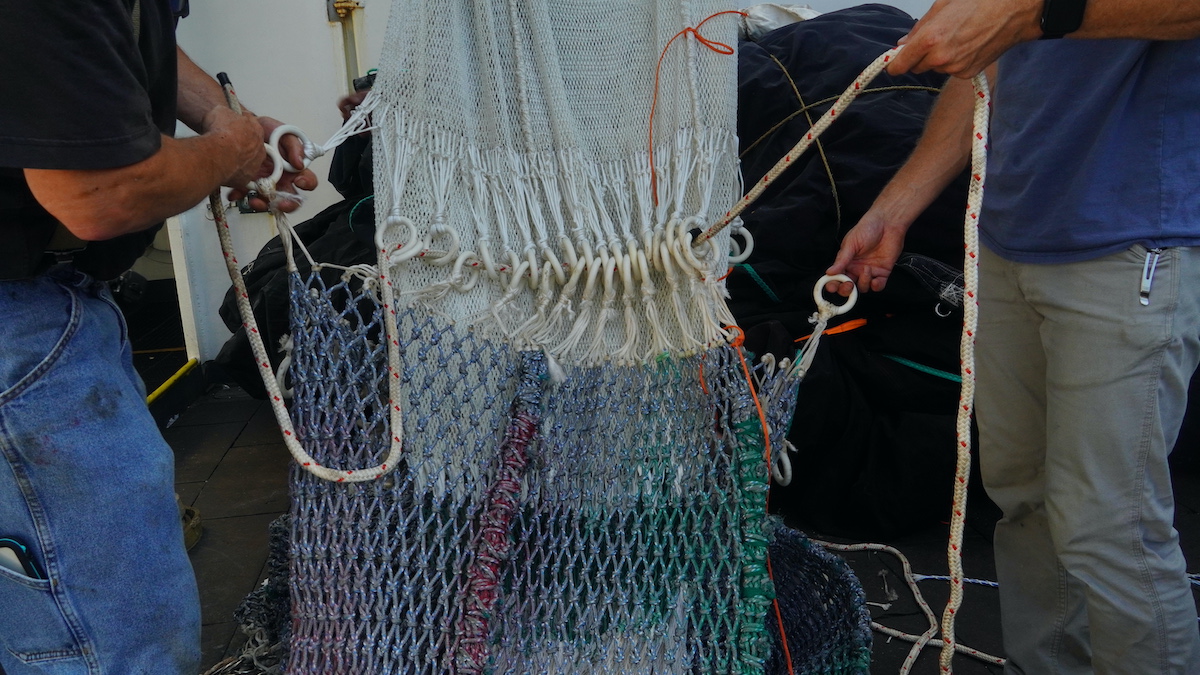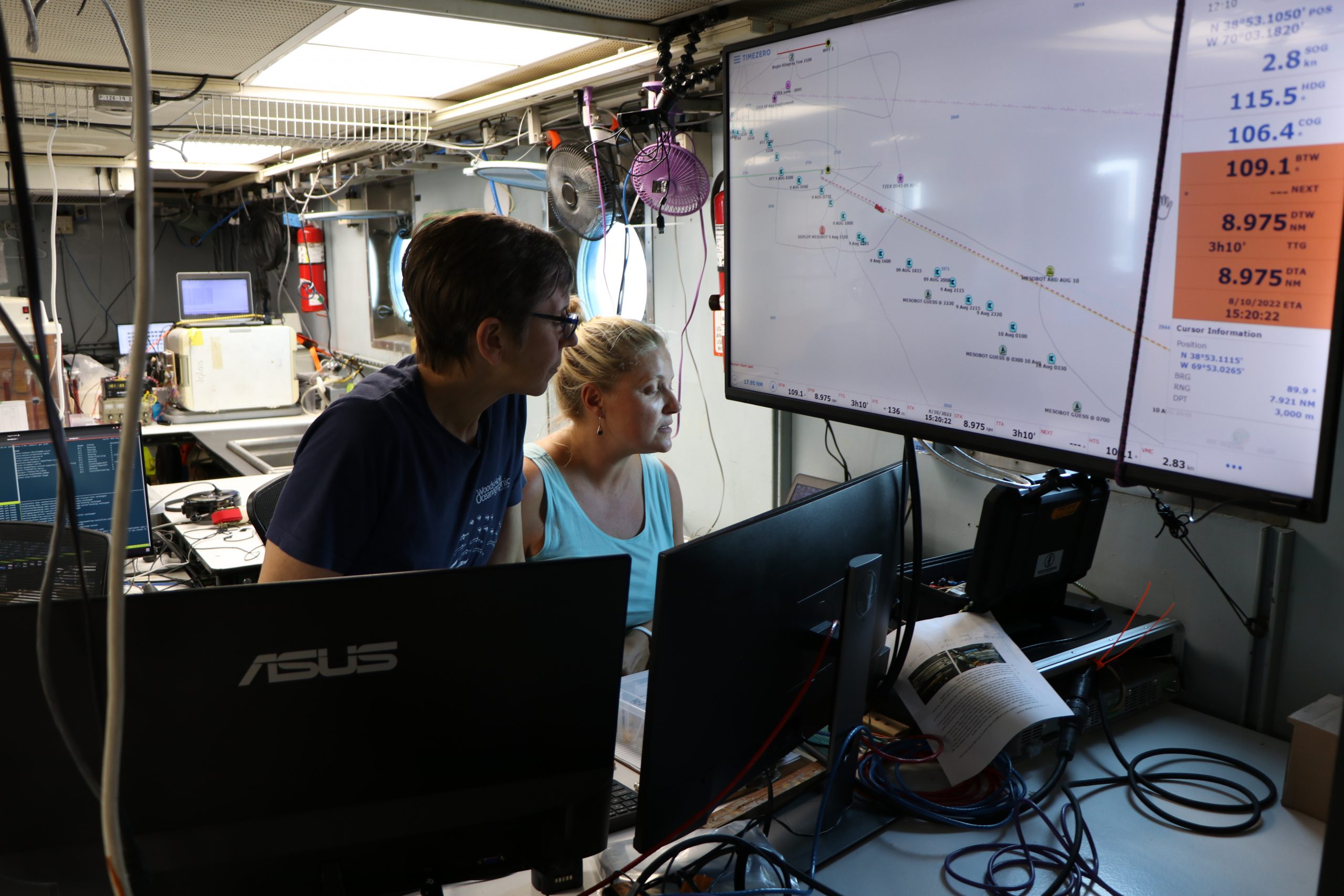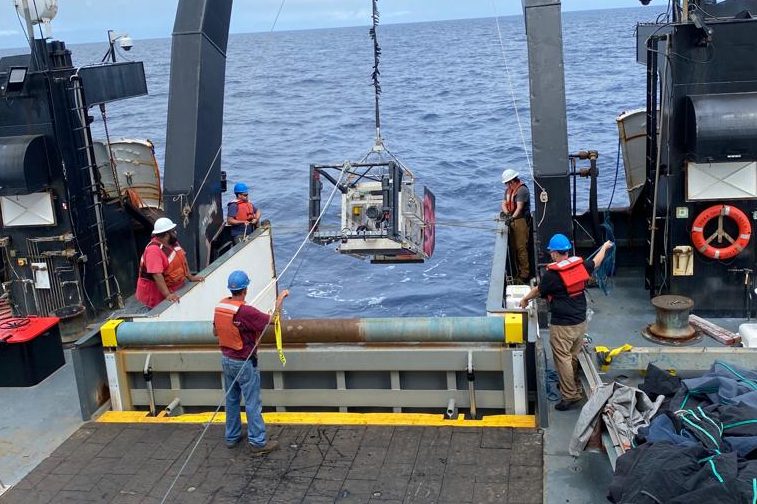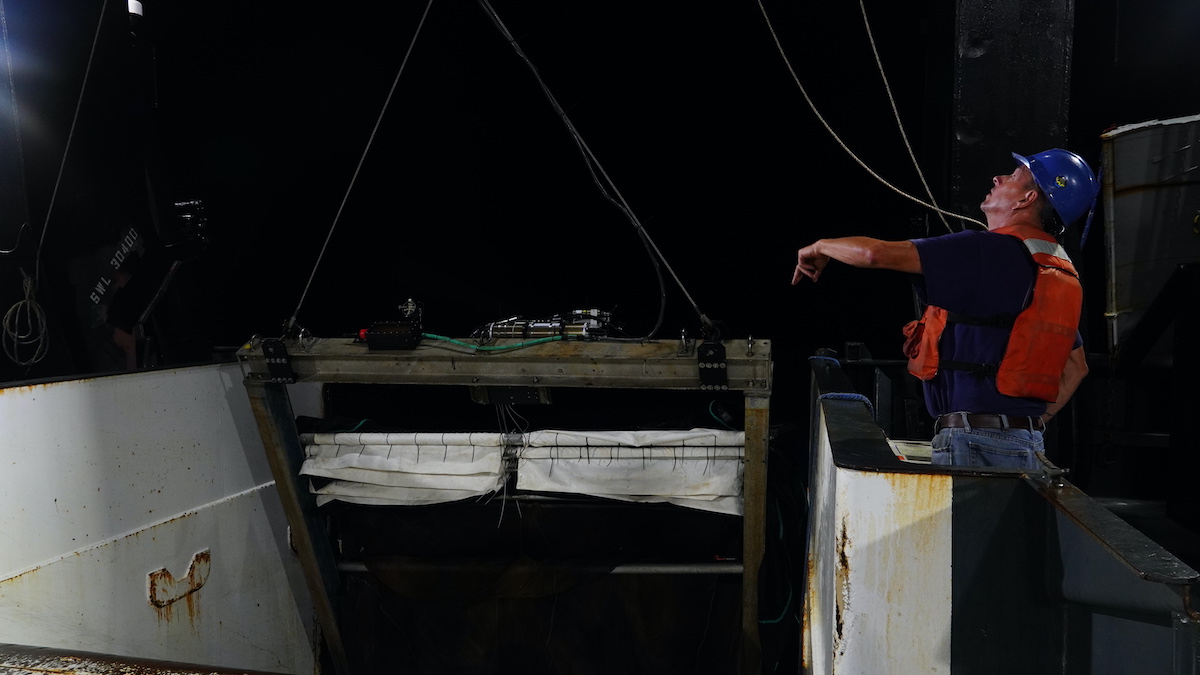Field Notes: Testing MOCNESS August 5, 2022
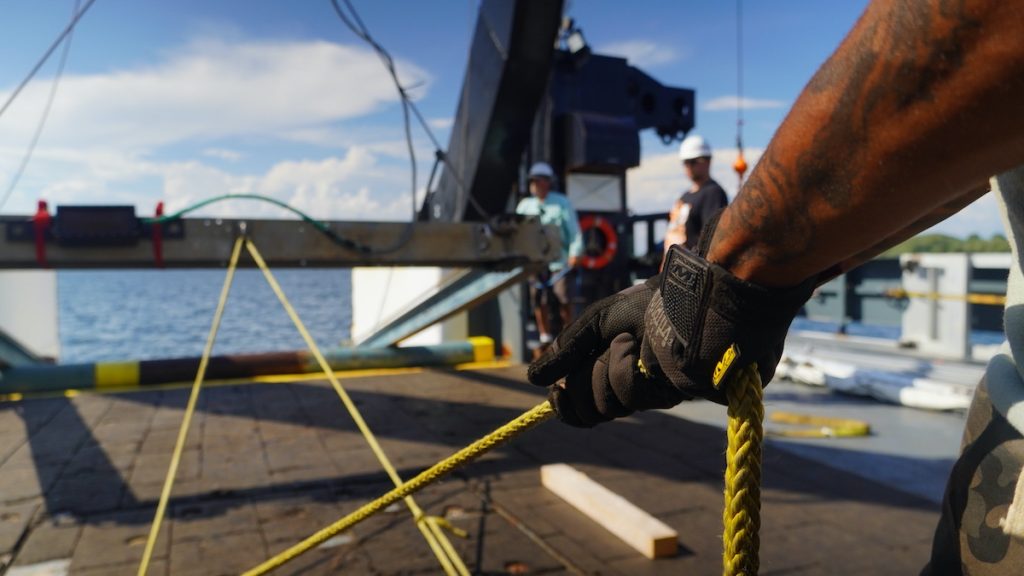
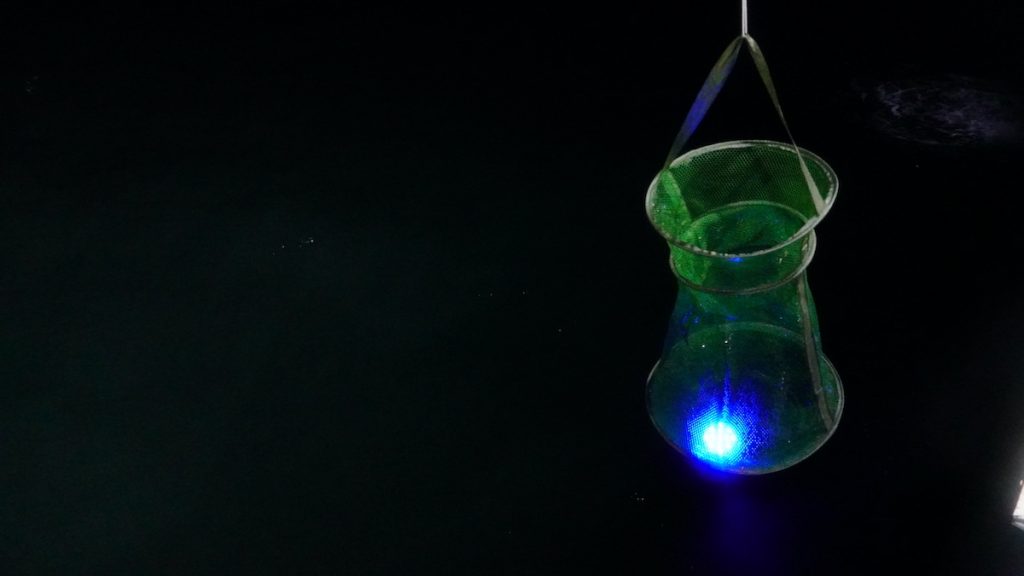
After hitting the high seas yesterday, we headed right back to Newport today to pick up personnel who weren’t able to join yesterday. Notably, they had to be brought out to sea in small boats to climb onto the R/V Bigelow.
We also had our first safety drill today, which involved gathering at the stern in our designated drill groups and trying on our “gumby suits,” head-to-toe wetsuits that include shoes, gloves, and hoods. In our bright orange and red safety gear, we looked a bit like sea creatures from the deep.
The rest of the day was focused on technical engineering–specifically, test deployment of the Multiple Opening and Closing Net with an Environmental Sensing System, better known as the MOCNESS tow net.
The team used a winch to practice lifting the large metal frame up, sliding it into the ocean and retrieving it. At first, a lot of care was taken to make sure that lifting the structure wouldn’t tangle wires, and that the winch could properly support the structure. The test deployment was repeated many times, and ultimately was quite successful.
The eDNA sampler, which attaches to the Deep See, was also successfully tested.
A few researchers tested out nets to catch fish over the side of the boat at night. Many fish struggle to survive when caught in trawl nets, and the scientists need live fish to test their respiration. So they experimented with alternatives: to lure the fish to the nets, they put brightly colored lights at the bottom, dubbing it a “fish rave.” Only one small fish was caught, unfortunately, and died almost immediately.
- Andrea Vale, OTZ Field Correspondent







